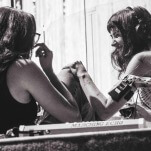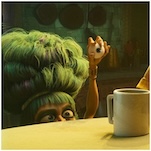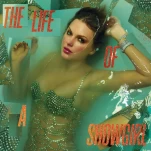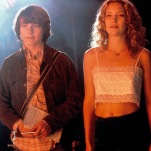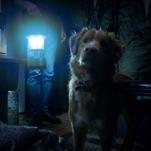The 10 Best New TV Shows of 2019
Photo Courtesy of Showtime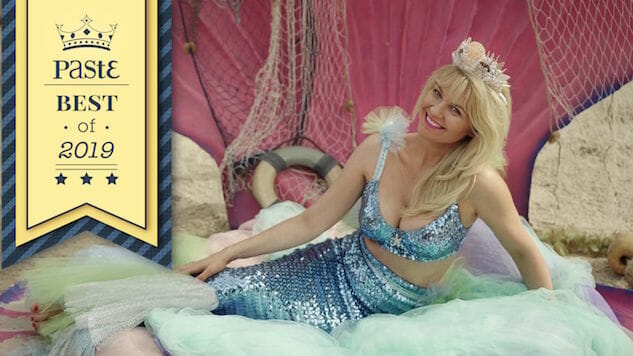
To be a TV show premiering in 2019 is to be one fighting for attention. With over 500 scripted series in the mix, getting noticed is not easy. We TV writers and editors do our best to point you in the direction of what we think is worth your time, but we also understand that there’s just not a lot of time to give. However, the 10 new series below are all definitely worth getting caught up on before their second seasons (hopefully) arrive in 2020—and you will be so glad you did.
Of note: Our cutoff date was November 15th, and no miniseries are included (these series are all structured as continuing stories, whether or not they are ultimately renewed)—out list of the 10 best miniseries of the year is coming soon! Also, though they missed our cutoff date for inclusion we’re really enjoying The Mandalorian on Disney+ and The Witcher on Netflix.
Additionally, be sure to check out our lists of the 50 best TV shows of 2019 as well as our picks for the best episodes .
10. Dead to Me, Netflix

Jen (Christina Applegate) and Judy (Linda Cardellini) meet not-so-cute at a grief support group. Jen’s husband died three months ago in a hit and run accident. Judy’s fiancé died eight weeks ago of a heart attack. They develop a friendship over their mutual anguish and their love of Facts of Life (Jen is a Jo, Judy a Tootie). Before long Judy is moving into Jen’s guest house and a beautiful friendship is formed. Or is it? Netflix is keen on keeping the pilot’s big reveal a secret. I watched it with my husband and didn’t even let him know there was a secret and he still guessed it within minutes of the show’s opening. But no matter. The series, rooted in terrific performances from Applegate and Cardellini, is a fascinating mix of humor and pathos. The show deftly balances both extremes and pull both off. After watching the second episode, I had no idea what Dead to Me is really up to and that’s just the way I like it. —Amy Amatangelo
9. Back to Life, Showtime
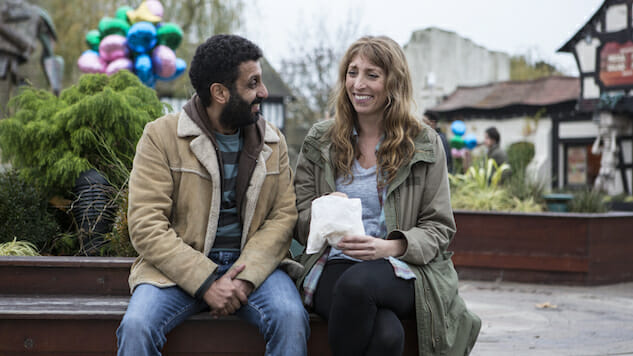
Like the exceptional SundanceTV series Rectify, Showtime’s Back to Life picks up when the 30-something Miri (Daisy Haggard) returns to her small hometown after being in prison for 18 years. But this series never flashes back to that time, because Miri’s focus is on starting over and getting a second chance—if only anyone would let her actually achieve it.
The charming and wryly funny series (running an economic six half-hour episodes) is also created by Haggard and co-written by Laura Solon. The duo take the familiar canvas of a small British seaside town where a crime was committed and everyone has secrets, and subverts our expectations of where the story goes next. Yes there is something of a mystery as far as what Miri did, but the script has fun playing with our assumptions (like having Miri’s mother Caroline, played by the great Geraldine James, pluckily hiding the knives before she comes back downstairs). Neighbors write terrible messages on the family’s fence, they harass Miri, or whisper like cowards about rumors they’ve heard. But through it all, Miri puts on a brave if exasperated face, appreciating her freedom and hoping that some day people can forget what she did.
The key to Back to Life’s success is how it dances along the line of humor and grief, like when Miri returns to her room—untouched since she was a teenager—and sees posters of David Bowie, Jimi Hendrix, and Michael Jackson. “Last one standing,” her mother says, gesturing to a bedside poster of Jamie Oliver. “Thank God he’s still with us,” Miri replies dryly. In a late episode moment, Miri notices that her parents have made a cup of tea for an effigy doll of her that someone left in their front garden. “Well, she was cold,” her mother says, almost breaking into a laugh—I nearly did the same. Back to Life is a quiet and emotionally genuine series that hinges on the fantastic interactions among its characters. It examines the fallout of this past tragedy through the mundanity of daily life, including the lies we hold on to that mask truths we don’t want to confront. —Allison Keene
8. Gentleman Jack, HBO
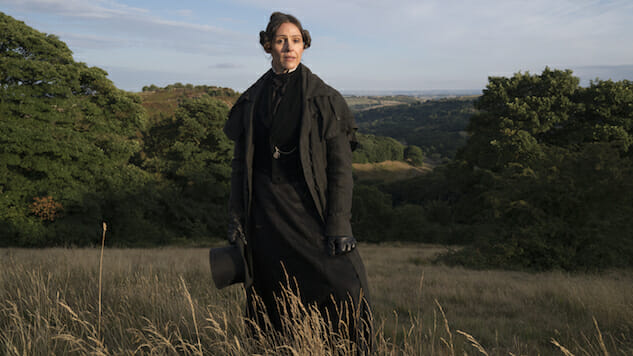
Gentleman Jack is drawn from the extensive (some four million pages) journals of Anne Lister, a landed class Yorkshire woman widely considered to be the first “modern lesbian” known to history. Those diaries exhaustively detail her rather audacious life as a world traveler, coal magnate, landlord, mountaineer, and “Parisian,” which seems to be a common shorthand in 19th-century Halifax for “avid seducer of other women.” The series focuses on a timeframe in the 1830s dominated by Lister (Suranne Jones) returning to her family home in Yorkshire and setting her sights on nervous heiress Ann Walker (Sophie Rundle) as a companion.
Watch it for an interesting depiction of 19th-century Yorkshire society with sleek, colorful production and a lot of beautiful high-contrast scenery; rolling green fields and hedgerows starting to sprout factory smokestacks, or Lister’s frock coat and men’s hat and frank stare amid all those blonde ringlets and pastel silk gowns and sunlit yellow drawing room walls. Watch it for Jones’ forceful, vivacious, smart-as-hell portrayal of a defiant iconoclast who chose to value her own integrity over whatever it was society needed her to value. Though all the performances are relatively strong, Jones instantly becomes the center of gravity in every frame she’s in. Perhaps most of all, though, watch it for what it suggests about why it nearly always makes sense to be yourself. Even if it sometimes hurts, because of course it will, whoever you are. —Amy Glynn
7. On Becoming a God in Central Florida, Showtime
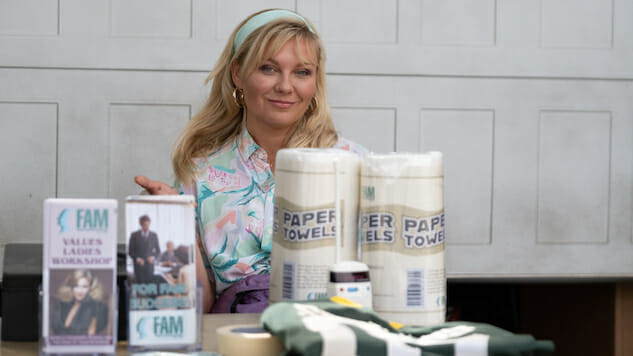
On Becoming a God in Central Florida is the next bold career choice for Kirsten Dunst, one that only confirms that there is arguably a Kirsten Dunst role for every day of the week or emotional state. The series is set in an “Orlando adjacent” town in 1992 where Dunst’s Krystal Stubbs, a water park employee and former beauty pageant queen, sets out to take down FAM (Founders American Merchandise), the multi-billion dollar multi-level marketing scam that brainwashed her husband Travis (Alexander Skarsgård) and ultimately ended up ruining her family and home life. Specifically, the Garbeau System of FAM, created by a Colonel Sanders-doppelganger in the form of Obie Garbeau II (Ted Levine).
Created by newcomers Robert Funke and Matt Lutsky—in their first major project and especially first-ever television show— and bounced around from ABC to AMC to YouTube Premium to Showtime, On Becoming a God in Central Florida is a series that caused me to, numerous times as I watched the first season, write in my notes, “What is this show?” But it was always in a good way, as I found myself in awe of what I was watching. With every hard left turn and 180 the series takes, the tone somehow manages to remain consistent. In fact, even through its trippier moments—like Krystal’s bird disease-driven “odyssey” in the fourth episode or in the introduction of Louise Garbeau’s (Sharon Lawrence) therapy method—the series continues to play them straight (or at least on the same level) as everything else in the show; no character ever addresses those bizarre moments. That’s a point that can make it easy to miss certain jokes and gags at first, but On Becoming a God in Central Florida excels because of how subtle it is—despite being a show whose very premise of Florida, the ‘90s, and pyramid schemes (and really, cults in general) suggests that “subtlety” is a concept that’s out the window altogether. This is not a series that is in a rush, even if the “get-rich-quick” component would make it seem so.
While On Becoming a God in Central Florida could easily work as a limited series—with a final scene that could easily be answered by the series co-creators in postmortems if it doesn’t make it past the first season—it also creates a perfect concept for a second, with an unexpected potential for the future from a show that took a while to even find the right home. —LaToya Ferguson
6. David Makes Man, OWN
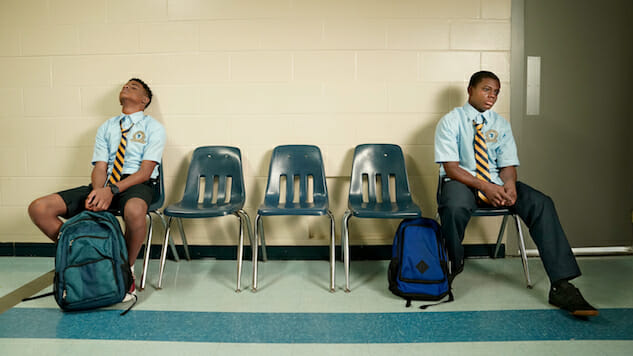
Expectations are the last thing you should be bringing into OWN’s first original teen-centric series. David Makes Man transcends expectations. It transcends genre. It just… transcends. Much of this transcendence is due, of course, to creator Tarell Alvin McCraney’s particular line of naturalistic poetic genius. If you’ve seen Moonlight or High Flying Bird or Choir Boy, the fact that young David Young’s story both defies easy description and delivers deeply human realness on every page won’t be a surprise. But while David Makes Man would be excellent no matter how it traveled from McCraney’s imagination to OWN’s screen, the version we get to watch rises to exceptional thanks to the presence of two things: Akili McDowell’s astounding work as teen hero David (a.k.a. DJ / Dai), and the textural shimmer of the team’s dreamy, innovative visual style.
So much of David Makes Man depends on the inner churn David experiences as he tries to balance the daily struggle to survive life in the Ville without falling into the drug-dealing world that got his deceased father-figure killed, the academic expectations that seem to exist in a vacuum at the magnet school he buses to every day, and the quotidian social pressures to fit in and not be weird (slash, not be embarrassed by his corny-ass mom) that every middle-schooler in human history has had to face. More often than not, McDowell is asked to communicate that tightrope walk with just his eyes, or his balled fists, or his quicksilver mask of a school-day grin. It’s so much, but McDowell delivers every detail with such heartfelt naturalism that it’s hard to remember David isn’t real. It’s genuinely astounding. —Alexis Gunderson
5. I Think You Should Leave with Tim Robinson, Netflix
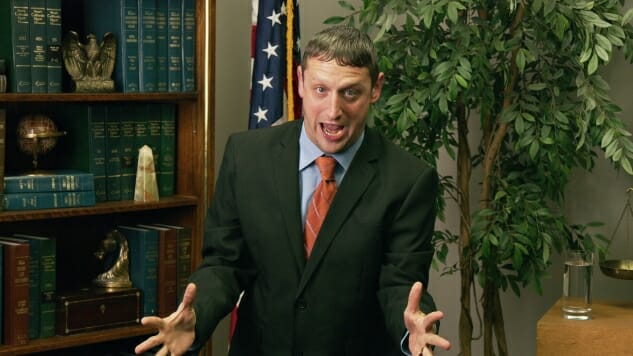
The co-star and co-creator of Comedy Central’s dearly missed Detroiters, Saturday Night Live alum Tim Robinson is equally comfortable on either side of the camera—he’s a fantastic sketch comedy writer who’s just as good of a performer, and who has carved out a unique and immediately recognizable niche in both. And he puts both skills to brilliant use in his new Netflix show, I Think You Should Leave with Tim Robinson.
Robinson is a master of embarrassment. His sketches tend to focus on two types of characters: People who tell small lies that grow larger and more obvious as they refuse to come clean, and people who are too irrational, confused, or stubborn to understand what’s happening—or refuse to understand because that would require admitting their own ignorance. This might sound like typical cringe comedy turf, but Robinson keeps it fresh by extending ideas behind all bounds of logic, resulting in characters or situations so utterly absurd that you won’t even think of comparing them to such cringe comedy forefathers as Larry David or Ricky Gervais. —Garrett Martin
4. What We Do in the Shadows, FX
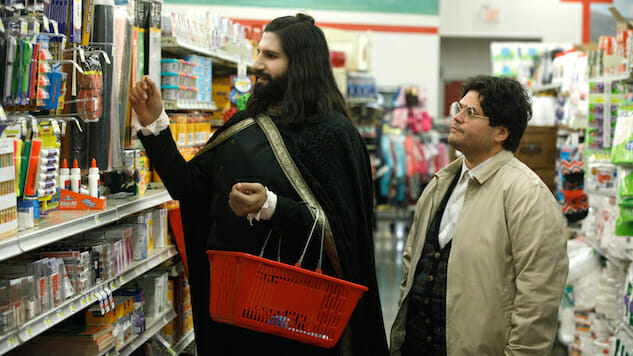
Based on the vampire mockumentary from Jemaine Clement and Taika Waititi, What We Do in the Shadows brings the sadsack bloodsuckers Stateside. The Staten Island roommates— vampires Nandor (Kayvan Novak), Laszlo (Matt Berry), and Nadja (Natasia Demetriou), as well as Nandor’s servant, Guillermo (Harvey Guillen)—are all ridiculous and slightly pathetic. The handheld camerawork is the deadpan punchline, with every shaky zoom in on a character during a confessional implying, “Can you believe this weirdo?”
There’s also a fourth roommate who’s always left out of their vampire games, Colin Robinson (Mark Proksch). He’s got two main differences from the rest of the gang: a last name, and a thirst for energy rather than blood. That’s because he’s an office worker who bores people with long stories, killing them slowly. His friends are Dracula; he’s Office Space. It’s a consistently funny bit, especially when the series seems to forget about him for entire episodes, only for him to pop up unexpectedly. Proksch’s sleepy shtick counterbalances the other vampires’ horny exploits, which are more often endearing than laugh-out-loud funny.
More of the humor comes from the macabre wordplay and deadpan goofiness—often thanks to Berry’s stark, blustery delivery, straight from his BAFTA-winning Toast of London, and the exasperated looks it draws from Demetriou and Guillen—which are then punctuated by violent slapstick, featuring gallons of blood. In bringing the vampire-out-of-water conceit’s mix of comic elements down to the granular level, What We Do in the Shadows harkens back to the strongest parts of the film, which thrived on its charming re-imagining of dopey mythical creatures failing through the world in a way very particular to Kiwi … or, now, Staten Island. And with its documentary style taken just as seriously as its campy effects and extravagant costumes, the cretinous cosplay is beautifully straight-faced and completely winning—especially when the show goes to oxymoronic extremes of mundanity, like a city council meeting about zoning ordinances.—Jacob Oller
3. Perpetual Grace, LTD, Epix
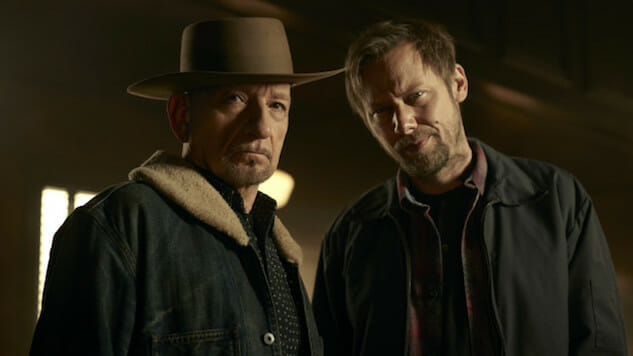
Creators Steve Conrad and Bruce Terris have crafted a visually distinct world full of moral quandaries, exploring the fluctuating nature of what defines a person’s character and perhaps their very soul. That exists alongside scenes like Sir Ben Kingsley calmly telling the guard at a Mexican prison that he is “the pale horse of death,” just before being loaded into an ice cream truck for transportation to a Super Max facility.
The series builds out its own world in a vaguely modern southwest setting, where James (Jimmi Simpson) gets embroiled in a scheme to rob a couple running a scam church. Their son, Paul Allen Brown (Damon Herriman), repeats several times that “they’re just two old people,” but Byron (Kingsley) and Lillian (Jacki Weaver) are forces to be reckoned with—starting with the fact that James has to get hooked on methadone first to go through their detox as part of the heist. “That’s intense,” he says thoughtfully. Perpetual Grace has a weird, wry humor to it, but even more importantly it’s rooted in exceptional character work as an unexpected band of men (and one boy) find themselves involved in a strange, international tale of self-discovery that involves astronauts, magicians, and the fallacy of thinking that west is always left.
It’s a fascinating journey to begin, with no sense yet of how things might resolve even after its season finale (if they ever do). Whether or not there is a Season 2, spending time in this unique world full of curiosities, stylistically potent flourishes, and deep hilarity will keep you perpetually sustained.—Allison Keene
2. Russian Doll, Netflix
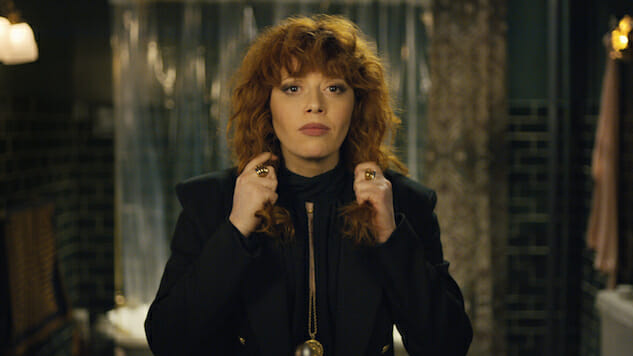
Netflix’s Russian Doll was almost too good to be renewed. By all means, renew Natasha Lyonne. Renew Amy Poehler. Renew Leslye Headland. Renew Charlie Barnett. Renew Rebecca Henderson and Greta Lee as hot mess hipster art friends ready to make parties across the Netflix spectrum that much spikier and sparklier. Renew Elizabeth Ashley as every Netflix heroine’s no-bullshit therapist (but make it fashion) mom-figure. Renew sharp, funny women directing sharp, funny women written by sharp, funny women. Renew that hair. Renew every damn thing about Russian Doll that helped make it such a brambly triumph of black comedy, macabre ennui and existential optimism. (Everything, that is, except Dave Becky in a producer’s chair—if Broad City can change precedent after four seasons, new series can avoid setting one altogether.) Renewing Russian Doll as a whole is trickier. It is, in the eight shaggy, smartly-constructed puzzlebox episodes of its debut season, nearly perfect. —Alexis Gunderson
1. The Dark Crystal: Age of Resistance, Netflix
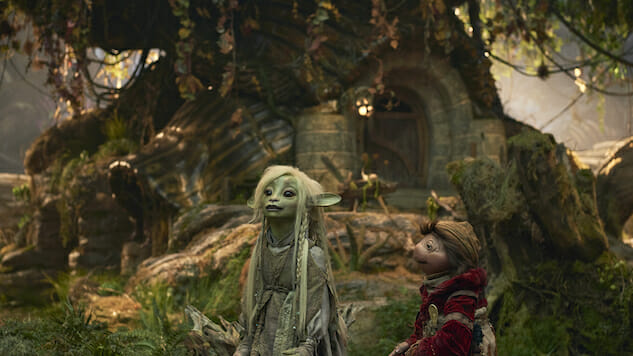
There is a moment in Netflix’s The Dark Crystal: Age of Resistance—a prequel to Jim Henson’s beloved Dark Crystal movie (which is great but you do not need to have seen it before this)—where two ancient characters are recounting an important tale to our heroes. It’s about the beautiful land of Thra, and an event many years past that caused an imbalance and blight within the crystal that stands at the center of their world. All of the answers they seek will be “brought to life by that most ancient and sacred of arts…” they’re told, with a dramatic pause as the character looks right at the camera and breathes out: “Puppetry!”
“Oh nooo!” our heroes groan, and one immediately falls asleep.
That is the bias that Age of Resistance acknowledges it’s up against—but folks, get over it. Allow this incredible production to sweep you away in an epic fantasy journey, one that is able to so much more deeply and fully explore the world Henson and Frank Oz imagined with the original film. You can liken it to Lord of the Rings or Game of Thrones or any high fantasy series you like, but after ten magical hours it truly stands on its own as a gorgeous, innovative, emotional, joyous, and exceptional wonder. If that sounds hyperbolic, it’s only because that’s exactly the kind of sincere enthusiasm the show engenders. Get past any hesitance over the puppets (which are actually outstanding, as CG is used only to smooth out backgrounds and action), turn subtitles on to help you remember all of the character names, and immerse yourself in this incredible world that we are so, so lucky to have.—Allison Keene
For all the latest TV news, reviews, lists and features, follow @Paste_TV.



